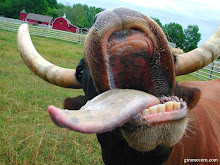It is unusual
for a FMCG brand to have such a rapid rise as that of Patanjali.
What makes this even more interesting is that the rise of Patanjali brand is mostly
fueled by making a claim of ‘moral righteousness’, over their
multi-national competitors. In this case study, I try to explore the claims made
on a product of Patanjali brand - ‘Patanjali Namkeen Biscuit’.
 On the product labels
it is claimed that the product has ‘NO ADDED SUGAR’. Furthermore, it is also claimed on that the product
is ‘CHINI RAHIT’ which literally
translates to sugar-free.
On the product labels
it is claimed that the product has ‘NO ADDED SUGAR’. Furthermore, it is also claimed on that the product
is ‘CHINI RAHIT’ which literally
translates to sugar-free.
Contrary to
the claims made on the product, a look at the ingredients list shows
that the product contains glucose and honey. The ingredients glucose and honey
are clearly ‘added’ sugars in the product, and not merely natural sugars
occurring as a result of some other source. Even more, the nutritional
information table on the product selectively mentions cane sugar as nil, but does not report the total sugar content in the product – which is a
usual industry practice.
From a
laboratory analysis of the product it was found that each 100g of the product
contains sugars as follows:
Total sugar : 14.8 grams
Glucose : 5.73 grams
Fructose : 9.07 grams
It is thus evident that the
product contains 14.8% sugar, of which glucose is about 39% and fructose is 61%.
Moreover, this sugar is ‘added’ and is not naturally occurring from other
ingredients (eg. from wheat flour). In light of this information, it is
apparent that the claims on the label are utterly misleading and can
potentially have adverse effects on people suffering from diabetes.
There also
seems to be confusion between terms, perhaps due to English-hindi mixup of
language. For the general public, the term sugar is commonly understood as
table sugar, i.e. cane sugar or sucrose – a glucose-fructose disaccharide.
However, in common parlance, blood glucose concentration – a biomarker for
diabetes patients - is also called ‘blood sugar’. In this regard, glucose may
be regarded as sugar even as per common language. Indeed glucose is nothing but
sugar, and so is fructose.
On the basis
of this information and facts, it makes sense for a respectable brand like 'Patanjali' to
correct the information on it’s product as follows:
- The claims ‘NO ADDED SUGAR’ and ‘CHINI RAHIT’ be removed.
- ‘Total sugar’ content be presented under the carbohydrate section in the nutritional information table printed on the product.


No comments:
Post a Comment